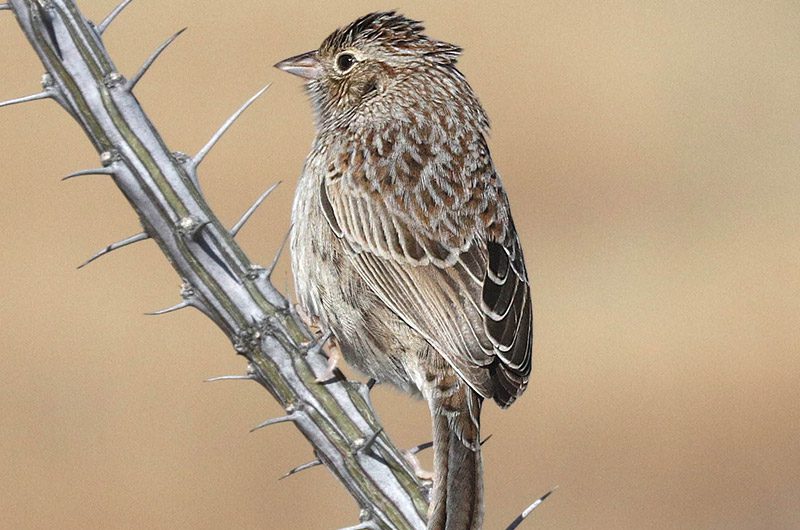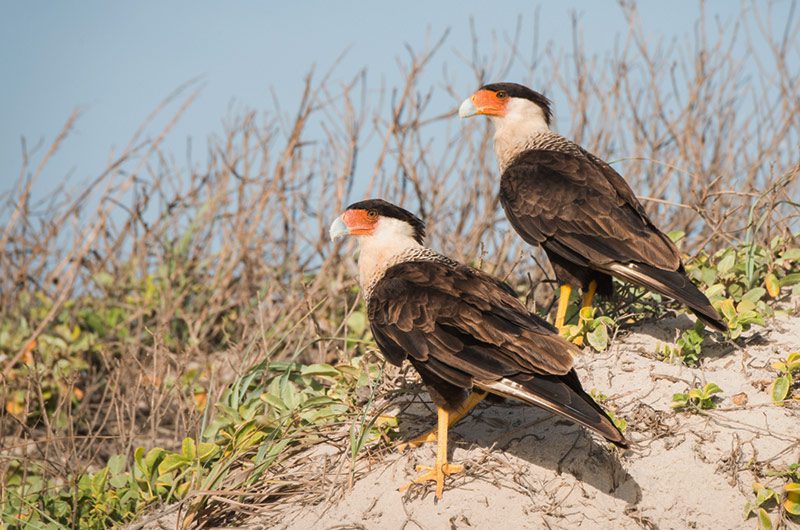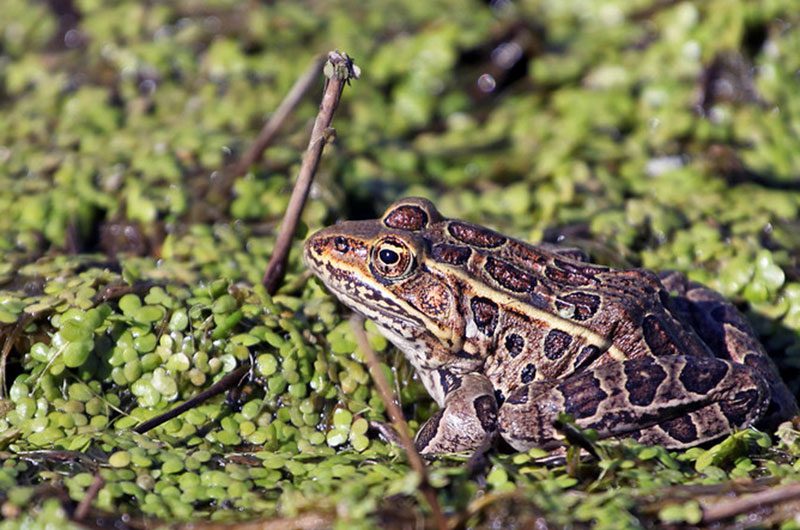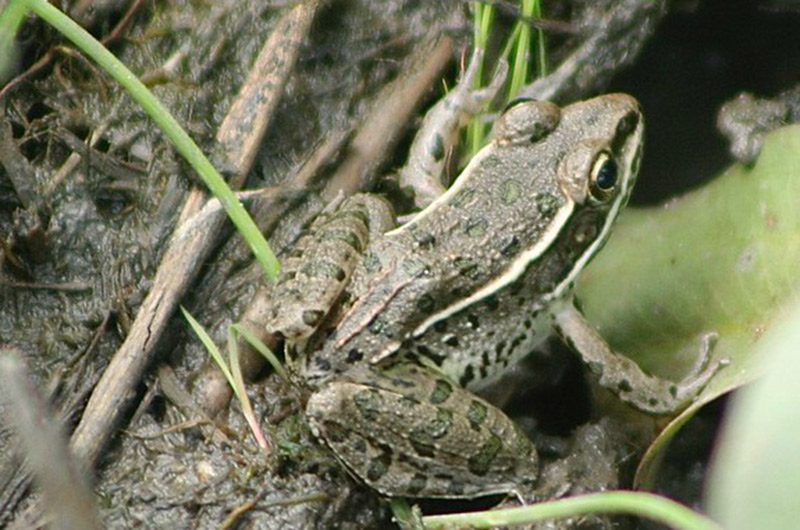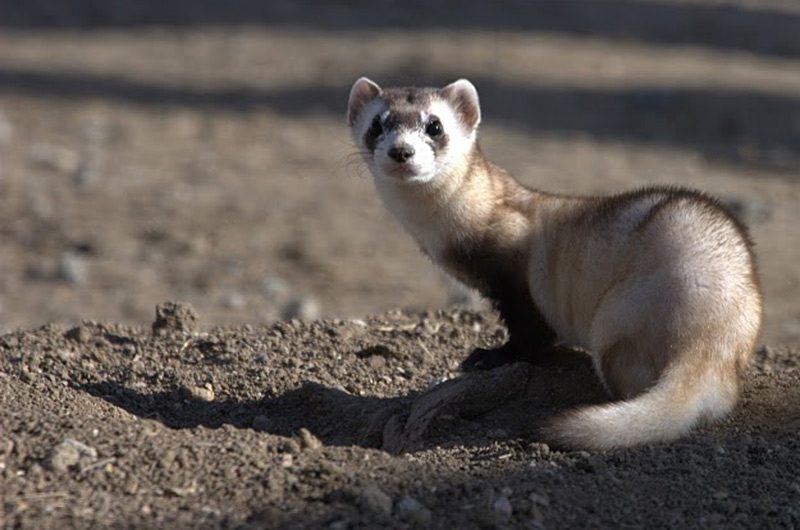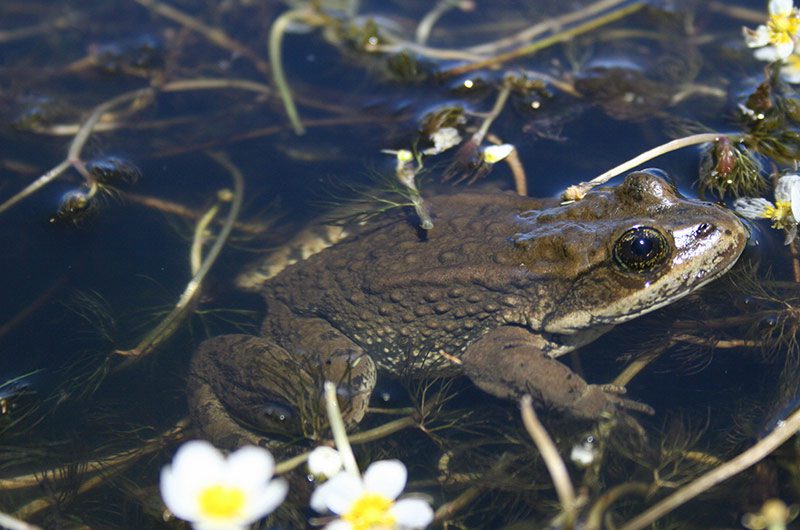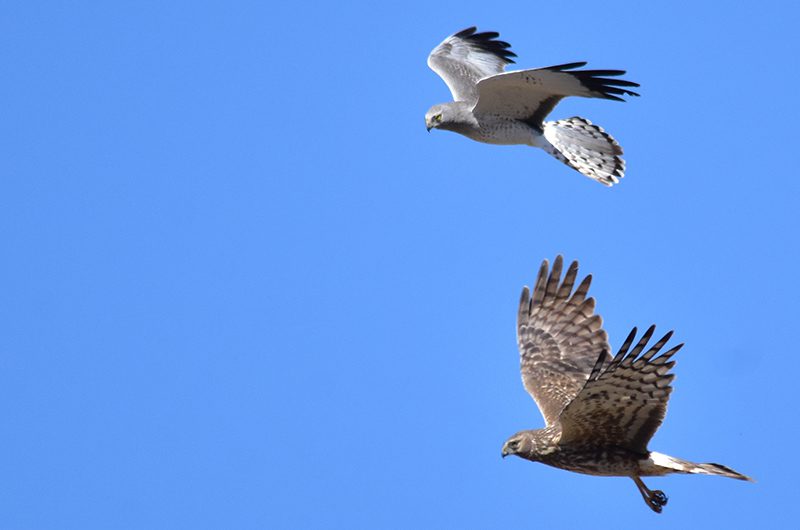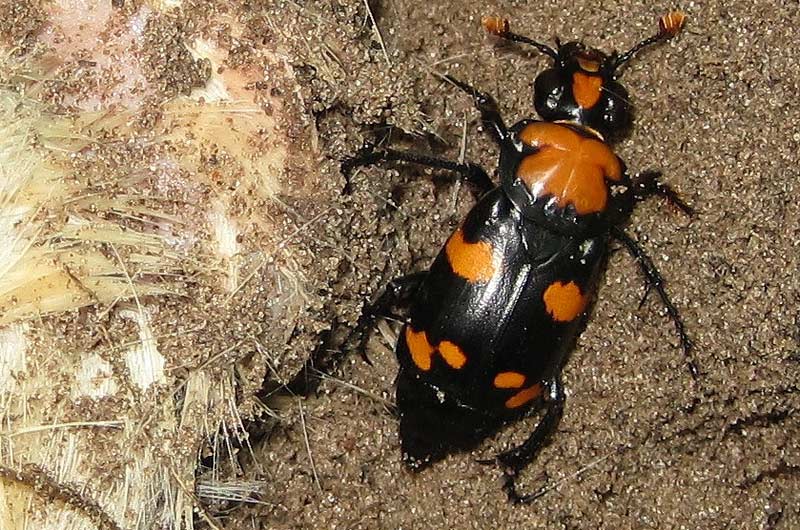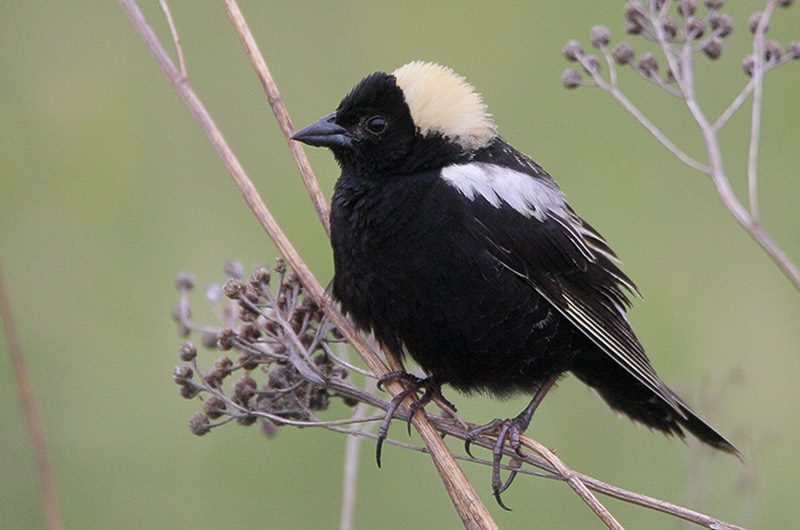LandPKS Learning
Habitat Hub
Factsheets and other helpful resources about the wildlife species living on your land (US only)
Cassin’s Sparrow
Cassin’s sparrow populations can fluctuate widely each year in both abundance and geographic extent, likely in response to summer precipitation. Within the center of their breeding range, they may be highly abundant or scarce, while individuals may suddenly appear at the edge of their breeding range where they do not usually occur. There are several hypotheses to explain these fluctuations, but little evidence to support any of them.
Read moreCrested Caracara
At times, two crested caracaras will pair up to take on larger prey, like rabbits. When a caracara feeds on roadkill, it is dominant over vultures, oftentimes scaring them away. They have flatter talons than most raptors allowing running on the ground more efficiently.
Read moreNorthern Leopard Frog
Northern leopard frogs get their name from the leopard-like spots on their backs and limbs. Each spot is dark brown with a lighter “halo” around it. There are two color variations. One, called the burnsi phase, has a solid, spotless back and spots or bars on the legs. The other, called the kandiyohi phase, is mottled across the back and side.
Read moreGunnison’s Prairie Dog
Gunnison’s prairie dogs are found in both montane and prairie habitats, yet mountain ranges separate portions of their range, preventing individuals from moving between montane and prairie habitats.
Read morePlains Leopard Frog
Females lay up to a few thousand eggs from spring to early fall in temporary or permanent water sources, including ponds, flooded areas, marshes, and sloughs, often in muddy water. Tadpoles that hatch early will become young frogs by summer, while those from later clutches spend winter as tadpoles and become frogs the following spring.
Read moreBlack-Footed Ferret
The black-footed ferret is the only ferret native to the Americas. They were once considered extinct in the wild until a small isolated population was discovered in Wyoming in 1981. In 1987, the last 18 wild ferrets were captured to establish a captive breeding program. Five hundred black-footed ferrets are now estimated to be alive in the wild, after reaching around 1,000 individuals at the end of the 2000s.
Read moreColumbia Spotted Frog
Until recently, it was thought that the Columbia spotted frog hibernated during the winter under mud. However, researchers have found that frogs are active through the winter under the ice.
Read moreNorthern Harrier
Northern Harriers are the most owl-like of hawks, though they are not related to owls. The disk-shaped face looks and functions much like an owl’s, with stiff facial feathers helping to direct sound to the ears. They rely on hearing and vision to capture prey, with its owlish face helping it hear mice and voles beneath the vegetation.
Read moreAmerican Burying Beetle
The minimum carrion size for breeding purposes is small birds or mammals. Beetles will fight over highly desirable carcasses until one dominant male and female American burying beetle remain. Together they bury the carcass using secretions to preserve it.
Read moreBobolink
The species name of the bobolink, oryzivorus means “rice eating” and refers to this bird’s appetite for rice and other grains, especially during migration and in winter. One of the most impressive songbird migrants, traveling some 12,500 mi/20,000 km to and from southern South America every year. A migrating bobolink can orient itself with the earth’s magnetic field, thanks to iron oxide in bristles of its nasal cavity and in tissues around the olfactory bulb and nerve. Bobolinks also use the starry night sky to guide their travels.
Read more
Mobile App | Data Portal | Knowledge Hub | Habitat Hub | Learning Collections | Blog | About | Contact | Support

